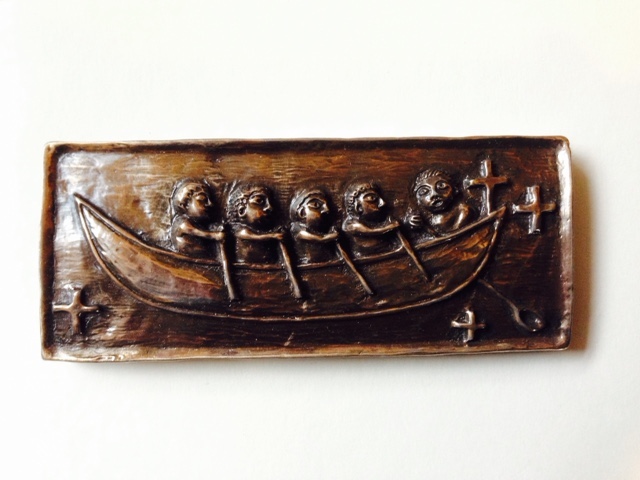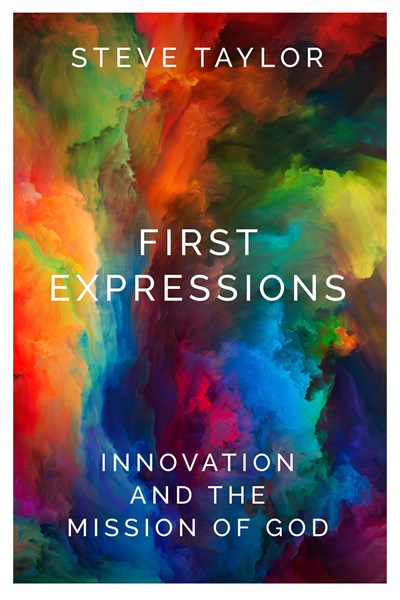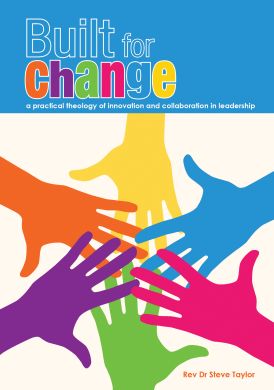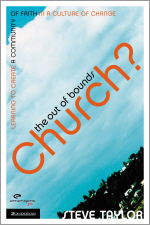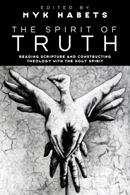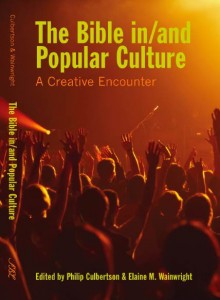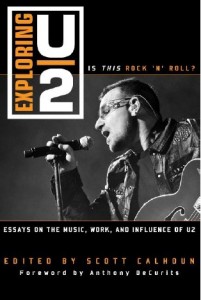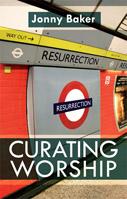Monday, April 09, 2012
“The Cross is not enough” book review – Chapter 1
As part of my post-resurrection Easter spiritual practice, I’m reading Cross Is Not Enough: Living as Witnesses to the Resurrection by Ross Clifford and Philip Johnson, Australian Baptist thinkers. I thought it would be a good discipline to blog as I read my way through the book.
Chapter one
This introduces the book. Their argument is simple – that Christianity has neglected the resurrection, to its detriment. The opening quote by George Beasley-Murray puts it well.
If the Church had contemplated the Empty Tomb as much as the Cross of its Lord, its life would have been more exhilarating and its contribution to the world more positive than has been the case.
Clifford and Johnson do this by exploring across the breadth of the Christian church
- the gospel presentations in Acts which all focus on the resurrection
- Luther, who is his writings urges the priority of the resurrection
- the work of evangelicalism, including John Stott and the Lausanne movement, which they critique as being so focused on the cross that the resurrection is lost.
While this breadth is commendable, at times it felt too broad brush. Notably, the attempt to cover Roman Catholicism is done by noting a quote from two Roman Catholic theologians. Catholicism is such a large and broad part of the church, any attempt to engage them as dialogue partners needed more attention.
This chapter also introduces a second part of their argument, that the doctrine of the resurrection must be so much more than an intellectual agreement. If resurrection is central, then it must also be able to be integrated into “practical areas of theology and church life, such as in healing ministry, pastoral care, and spiritual development.” Which suggests an intriguing book, as the authors indicate they want to explore the resurrection in areas like popular culture, new forms of spirituality, inter-religious dialogue.
The writing style is accessible, with stories helpfully sprinkled through. These give the impression that Clifford and Johnson are no ivory tower academics, but are themselves deeply involved in mission and cross-cultural encounter. Alongside the readability of the book is an impressive set of footnotes, suggesting a depth and quality of research.
From Chapter one, this looks like being a really rich post-Easter read, and I’m looking forward to chapter two – The resurrection effect.
Sunday, March 25, 2012
the spirituality of justice: Loyal to the Sky
One of the great things about Kindle is the chance to read in new areas. This has emerged for me primarily because of the resourcing this website, which lists free and vastly reduced books. I’ve found myself looking books on trends in beer, production of comics and the history of salt. If they were paperback, I probably wouldn’t touch them, but being electronic, they seem worth a browse. And some of them get read and as a result, my world becomes larger.
One I’ve just finished is Loyal to the Sky: Notes from an Activist. (Sorry, the free deal on Amazon is long gone). Marisa Handler, born in South Africa, has a passion for justice, which has become her life’s work. From protesting against the war in Iraq, to free lance journalism that exposes multi-national companies in South America, to street theatre against covert US military involvement in Central America, this is a fascinating insight into a person and a spirituality (sadly) rarely seen in church.
What makes it appealing is the autiobiographical window into the growth of a protestor. This is not a book filled with anger, but a search for a better world, through the evolution of a passionate, caring person.
Here are some of the quotes that struck me:
The impact of protest
For a single day, our action carved out a space for justice—a space to remind people, in the midst of their busy lives, that there is a larger canvas. That the Palestinians are suffering. That our tax dollars are fueling an occupation. And people on the streets listen. Bystanders take our flyers. Supporters honk their horns as they pass. Journalists record our words. Priests and officials come to speak. The police try to negotiate. We make the evening news. I spend the day high on adrenaline
About a new way of leading
For larger actions, affinity groups gather in clusters. Decisions regarding specific actions or campaigns are made via consensus process at spokescouncil meetings, which are attended by representatives from affinity groups. While consensus process can be thorny and at times protracted, what consistently amazes me is how well it works. A proposal is offered, clarifying questions are asked, discussion is held, concerns are raised, amendments are made, concerns are resolved. Each person’s needs and qualms are heard and incorporated into a process that arrives at decisions and moves forward.
About a new type of leader
Soft-spoken and temperate, David exercises the sort of understated leadership that consistently provides wise guidance and strategic acuity to a movement that is relentlessly nonhierarchical and anti-authoritarian.
About the fact that new forms of church need not be large
In the global justice movement, the affinity group is the basic unit of direct-action organizing. Groups are composed of five to twenty members; the prevailing idea is smallness and, by extension, trust
About the busyness of life in Western culture
I think of my life back home: constantly rushing to meetings and appointments, constantly feeling pulled between activism and music and social obligations and every other essential thing on my endless list. I have to pencil in “nothing” when I want an evening off. Every activist I know is similarly overburdened and stressed, staggering around like Atlas beneath a world only we can save. It can’t be helping our work.
About the ethics of change
Is it possible to effect change without dehumanizing others? Without someone to hate? Can we connect with each other as we have this week—can we build a movement—without a common enemy?
How much of my activism has simply been a vehicle to justify my own anger and hatred?
The mission framework I make is this: that often new forms of church emerge around gathering and worship. But these are not the only forms of spirituality. There is also an activist spirituality and one of the fertile areas for fresh expressions to explore is new forms of church that cohere around mission, around combined Kingdom projects.
Friday, February 24, 2012
ethnography as pastoral practice
I’m finding Mary Clark Moschella, Ethnography As A Pastoral Practice: An Introduction a really helpful read.
It offers a way of bringing about change, in which the leader becomes an ethnographer, a listener to the patterns and habits that form a group. It provides case study after case study, of ministers who listened, who were surprised by what they heard, who fed back their surprise and as a result, change occurred.
Ethnography is a set of habits and processes and thus the book gives a really clear way of embarking on change. Some leaders do this intuitively. But for those who don’t, this book is gold. It explores the ethical boundaries, developing questions, offering feedback – all written in accessible manner, with story after story.
The book is thus an excellent resource for post-graduate students and for any minister or leader thinking about how to be part of change. It will be especially helpful for those folk put off by CEO and hierarchical models of leadership, but still wanting to be part of transformation of their community, and communities.
Wednesday, February 15, 2012
book review: Liturgies from Lindisfarne
 Liturgies from Lindisfarne. A book review (for Touchstone) by Rev Dr Steve Taylor
Liturgies from Lindisfarne. A book review (for Touchstone) by Rev Dr Steve Taylor
In a strange twist of fate, I encountered the author (Ray Simpson) and the sacred place (of Lindisfarne), before I opened this book. In September 2011, during study leave in England, I found myself in the North of England and close to Lindisfarne. Intrigued by its history of Christian pilgrimage, I decided to visit.
Over a long weekend I appreciated the isolated scenery and the abundance of bird life. I visited the church ruins, soaking in the stories of Celtic mission through Cuthbert and enjoyed the chance for regular prayer with the Christian residents on the Island. It was a deeply renewing few days.
Over breakfast on my last day, I enjoyed tea and toast with Ray Simpson. Past retirement age, Founding Guardian of the Community of Aidan and Hilda, still a popular speaker on spirituality and mission, we shared of faith and formation.
Upon my return, “Liturgies from Lindisfarne,” awaited on my desk. This makes the book the actual record of the work of a praying community: the Community of Aidan and Hilda, a dispersed, ecumenical body who seek to apply lessons from the Celtic Church in Britain (280 to 634 AD) to the church of the 21st century.
It offers a wide range of prayers – for daily prayer through a week, for the journey through Christian festivals, for special celebrations and for the events of life.
The words are fresh and clear, evidently honed over time by their actual use in a praying community. The theology is creation-centred, paying close attention to the experience of being human, including the seasons and the rhythms of life. This shows respect for the patterns and experiences of Celtic spirituality which shaped the first missionaries to Lindisfarne.
A pleasing feature is how attention is paid to the different experiences of the seasons. Thus prayers for Easter are not linked with Northern Hemisphere experiences like spring or lengthening day light, which makes them less useful in a down-under context.
One drawback is that it is A4 and thus, as a book, large in size. While this allows the type to be easily legible and for the layout to be spacious, it can make it difficult to hold, perhaps more so for those older in life.
A bonus is that all the prayers and services are contained in an accompanying CD-ROM, making it easy to reproduce on orders of services.
Over the last few weeks, I have enjoyed offering the Daily prayers among my community. It makes a welcome resource for prayer, both individual and communal.
Friday, February 03, 2012
fantastic read: From chaos to mission
On the plane yesterday to Sydney I started reading Gerard Arbuckle’s From Chaos to Mission: Refounding Religious Life Formation. It is fantastic.
It is not exactly recent (1997), but Jonny has often mentioned Gerard, so last year I brought a copy and it arrived earlier this week.
Gerard is a Catholic, yet his writing has so many echoes – the priority of context, the call for pioneer type ministry, the challenge to face society rather than church. In From Chaos to Mission: Refounding Religious Life Formation he explores these themes in relation to training – (in Protestant speak) how to train missional leaders.
He does this out of personal experience, having tried to reshape a Catholic Seminary for mission. He uses cultural anthropology as a lens, what is happening in the shift to post-modernity and how this influences both the task of mission and those who candidate; plus the cultures of what is happening within organisations, how they respond to change.
For myself, working at Uniting College, which has embarked on a change process around leaders in mission, it was like I’ve found a kindred spirit, albiet from a totally different space. When I become Principal, I think I might suggest we as staff and as a leadership council read it together as a way of looking at ourselves from another perspective.
Oh, did I forget to say, Arbuckle is a Kiwi (but currently works in Sydney, for the Refounding and Pastoral Development unit!
Tuesday, January 10, 2012
holiday reading part 2
And Still the Music Plays is an absorbing read. Written by a psychologist with a passion for those suffering from dementia, it is structured around 22 chapters, each a short story of a particular person and their experience of dementia. The narrative approach works really well, giving humanity and dignity to those who suffer and allowing an exploration of various issues in the care of those who suffer from dementia. It advocates a patient centred approach that is deeply critical of much modern rest home practice, by exploring how listening to the unique history of each person suffering from dementia can offer insight into care.
I have found a poem (What to remember when Waking) from Dave Whyte’s The House of Belonging a helpful tool for meditation, especially as I journeyed through the process of application for Principal at Uniting College. The House of Belonging
includes this poem and others. Sadly, while some others were of interest, a number of the poems had the feel of being squeezed into an existing framework. The odd line was repeated, and a theme of becoming open to the now of our existence in order to be shaped by what we open ourselves too, kept reappearing. Which starts to feel a bit like someone putting forward a message rather than plumbing creativity. Still, and a nice way to sit for a few minutes and I will be returning to a number including Loaves and Fishes and Working Together.
Friday, December 23, 2011
being consumed (at Christmas)
Being Consumed: Economics and Christian Desire is a great little book. At only 100 pages, there is both a depth of theological reflection, yet an incredibly practical edge. It is an attempt to “sketch out a view of everyday economic life with the use of Christian resources.” (viii)
“The Eucharist tells another story about hunger and consumption.” (94).
The argument is that the Eucharist provides an alternative imagination to globalisation. It’s not just theory, because the assertion that the “church is called to be a different kind of economic space and to foster such spaces in the world” (ix) is followed by some really concrete practices
- turn our homes into sites of creative production, not just consumption (such a practical alternative perhaps to Christmas)
- donate time to those in need
- deposit in community development banks
- buy locally
- Christian business practices and
- Fair Trade
I reckon it’s a sort of Catholic equivalent of Andy Crouch’s Culture Making: Recovering Our Creative Calling in the sense that both seem to provide an integrative center for mission. So in Being Consumed
, that integrative centre is the eucharist, while in Culture Making
it is the invitation to play in culture that allows a mission, whether it is a minister leading a change, a teenager engaging in social justice, a retired person crafting for charity or a Council worker enacting legislation for the sake of a cleaner city.
(For some of my commentary on this a great little video, see here).
Both seem to provide ways beyond the church-centric imagination that plagues so much of contemporary mission (including fresh expressions) thinking. What is more appealing about Being Consumed, in contrast to Culture Making
, is that the eucharist is more more communal, much more social, than the tendency to individualism in culture makers.
Further links:
Consumerism at Christmas (part one)
Consumerism at Christmas (another here).
Tuesday, November 22, 2011
the emotions of Jesus
Stephen Voorwinde’s, Jesus’ Emotions in the Gospels is an intelligent, thorough and challenging study of what is “a blind spot in Gospel studies.” Afterall, Christians tend to downplay the emotions of Jesus. It’s part of the Western cultural distrust of emotion and part of the privileging of male modes of being. A result is the tendency to avoid the radical implications of God as fully human.
Stephen Voorwinde takes note of 60 references to Jesus’ emotions in the Gospels. Each one is then explored, located within their context, literary and cultural. The result is an invitation to not only think, but to worship as well, to be reminded of the sheer radicality of being Christian, of experiencing transformation from a God who in Christ cries and love, is troubled and dismayed, experiences joy and anger.
The theme opens up a rich range of questions
- Are emotions indicators of humanity? Or divinity?
- Is it a sign of Christian maturity for us to reflect the emotions of Jesus?
His conclusion is that
“The emotions of Jesus are the emotions of the Messiah … The intensity of Jesus’ emotions .. is often due to a detailed knowledge of the future that is seldom given to mere mortals.” (216)
While I’m not yet convinced of Stephen Voorwinde’s conclusions (too much future knowledge risks underemphasising the full humanity of Jesus), his care, clarity of writing and depth of reading is a rich gift.
Friday, September 30, 2011
The Roving Party by Rohan Wilson
35 hours travel, from Cliff College back to Adelaide, does provide quite a bit of time to read – including the 2011 Australian/Vogel Literary Award winner, Rohan Wilson’s The Roving Party.
It is a sober read, set during Van Diemen’s Land (now Tasmania)’s Black War, fought between 1804 and 1830, when indigenous and settler clashed. The book accounts for what amounts to acts of legalised genocide, as the colonial Government paid for local militia to exterminate indigenous people. This is a harsh and violent world, set in stark contrast to the beauty and bounty of the land (aided by some simply gorgeous writing). It is a very impressive literary debut (Wilson’s first book): well paced and thought provoking.
And with plenty of time to ponder, as my plane flew over mile upon mile of Australian outback dirt, I wondered: How to do mission today, in a land with this sort of history? Is reconciliation simply for current events, or can it also extend to historic violence?
Tuesday, September 13, 2011
That Deadman Dance by Kim Scott
Part of coming to a new country, part of reading cultures, is enjoying the literature. That Deadman Dance: A Novel, by Kim Scott, is a fine example of Australian indigenous literature. It tells the story of early encounter between indigenous and coloniser through the eyes of Bobby, a young indigenous man growing up in a rapidly changing world.
It burrows down into the early settler mindset, offering some painfully honest reflection on how they sought to view and control the world. “He ascertained their bearings. Soothed himself, as any observant bystander could see, in the handling of compass and paper. The oilskin wrapping and journal.” The use of maps to control, subjugate, assume ownership. All the time, they are actually helpless, entirely dependent on indigenous wisdom and insight.
Yet over time, that worldview would overpower another, indigenous, worldview. “The old [indigenous] man claimed it was his right, that it was his town! Papa laughed recounting it, said it was true in a way. And it was also true, as [the young indigenous man] apparently claimed (shouted, she’d been told, and slapped the policeman), that the old man had received a ration of flour from previous authorities, and had even been dressed, accommodated and fed at government expense. Why? Because he was the landlord. It might even be true, in a way, but to what use do they put this ownership as against what we have achieved in so short a time?”
And thus different attitudes to land clash. What is fascinating is how the inter-cultural clash is framed. Not by bitterness, although that is deserved. Rather, their is a quiet dignity in the method, (a deep theology of hospitality), spelt out in the appendix-
I wanted to build a story from their confidence, their inclusiveness and sense of play, and their readiness to appropriate new cultural forms—language and songs, guns and boats—as soon as they became available. Believing themselves manifestations of a spirit of place impossible to conquer, they appreciated reciprocity and the nuances of cross-cultural exchange.
Some 200 years later, words well worth pondering – They appreciated reciprocity and the nuances of cross-cultural exchange.
Tuesday, August 23, 2011
Saturday, July 02, 2011
house churches are about a new vision not a new form of church
I’ve spent a wet, winter’s day reading. It is one of the ways I am renewed – reading – and especially reading theology. (Wierd I know, but there’s something about reading slowly and deeply and thoughtfully that I found renewing.)
Here’s some gems from the conclusion to Luke: The Elite Evangelist
by Karl Allen Kuhn (A book I wanted to read, given how much time I spent talking to groups about both Luke 1:39-45 and Luke 10:1-12). In a section titled “Turning the world upside down” Karl Kuhn notes 15 ways in which the theme of social and economic reversal is manifested in Luke-Acts. This includes house churches and ministry.
To us, the household churches and their economy may seem rather quaint, even naive, but they constitute a striking rejection of the Roman and Judean economies, in which redistribution of resources was based on social location and power, not need. The practices of the early believers also set aside the engrained cultural notion of limited good. (89)
Given that there is a lot of talk in emerging church/fresh expressions about the potential place of house churches, its fascinating to see them framed not as a new form of church but as a different way of being in relationship in the world. In other words, this is not about moving the deck chairs, but about living in ways that challenge the economic and social values of our culture.
Here’s a second quote, in which the new vision is limited not to where and how ministry happens, but also to who does the ministry.
Luke repeatedly makes it clear that the authority to proclaim the mysteries of God resides not in a select few, but in an ever-expanding group of ministers and eyewitnesses … Luke alone among the evangelists pairs and follows the sending out of the Twelve (Luke 9) with the sending out of seventy (Luke 10), the latter receiving the same commission and authority as the Twelve … Similarly, in Acts the ministry of the Twelve is soon overshadowed by those outside the original apostolic circle. (90, 1)
Which is a point I repeatedly make when talking about new forms of church/fresh expressions. And was certainly our experience at Opawa, the potential of gathering lay teams of 3-5 folk to pursue mission and ministry through the creation of fresh expressions.
Friday, July 01, 2011
another published piece – The Gospel and the Land of Promise
I’ve just had a chapter published (the book arrived today) in a new book, The Gospel and the Land of Promise: Christian Approaches to the Land of the Bible. Published by Wipf and Stock the book explores an acute theological problem, how to relate to “land” in light of the Bible.
My chapter explored the Jacob narrative in Genesis. I offer a post-colonial reading, reading the narrative in light of New Zealand indigenous, animal and migrant stories. Here’s my conclusion:
I have used four readings – Nga Ururoa, a poem by Nola Burrell, Te Horeta and Cook’s diary – to read the world in front of the Biblical text. Themes of land, indigenous species, ownership, supernatural, hospitality, weather and mapping have opened up some fresh angles with regard to the migrant journey of Jacob in Gen 28:10–18. Many resonate with post-colonial themes. These include the following:
• Land has been reframed to include indigenous species, and to be considered as both gift and responsibility to all migrants.
• Pluralism has been considered in light of Jacob’s ability to discern “I Am” in the “holy place” of anOther.
• Awareness of Eurocentric narratives of power and control has been raised by hearing Maori understandings of land ownership, and subverted by considering a theology of providence which opens up space for the discovery of new configurations of being human.
• Reaction against Western ways of thinking and producing has been unearthed in relation to the presence of the supernatural.
• The prominence of diaspora and indigenous issues has been heard in terms of all peoples as migrants. Indeed, all people who live in Aotearoa New Zealand have, by the very fact of New Zealand being an island, had ancestors who have had to cross “watery chaos.” Further, we have been exposed to hospitality as a potential mark of cross-cultural exchange, along with the potential of food to re-negotiate human relationships.
Other chapters explore other Old and New Testament themes in response to the notion of “Land of Promise.” The book gets some great wraps ….
“These able and provocative essays will offer us skilled guidance in territory few scholars are willing to enter.” -Gary M. Burge, Wheaton College
“the brilliant scholarship, biblical integrity, and keen commitment to justice that emanates from every chapter” -Alex Awad, Bethlehem Bible College
“In these excellent essays, Christian scholars in New Zealand–where indigenous land rights have long been at the center of public discourse–reflect on ‘land’ in the Bible” -Chris Marshall, Victoria University of Wellington
“an immensely important work of biblical scholarship on the theology of the holy land.” -Stephen Sizer, Christ Church Vicarage
Wednesday, April 06, 2011
When Fresh expressions suddenly made me claustrophobic
It’s Lent. A time to focus on Christ and what it means to live as Christ followers. So I’ve started to tuck into Rooted in Jesus Christ: Towards a Radical Ecclesiology. Daniel is a younger leader, born in Spain, studied in United States, now back in Europe working with migrants. It’s a rich and fertile bed for theological reflection.
A few pages in he discusses the place of martyrs for theology.
“In recent decades, liberation theology has become a theology of martyrdom. A number of bishops (the best known being Archbishop Oscar Romero in El Salvador, Bishop Enrique Angelelli in Argentina, and Bishop Juan Gerardi in Guatemala), various priests and nuns (including the six Jesuits of the Universidad Centro-americano Jose Simeon Canas in San Salvador), and thousands of catechists and members of base communities have been killed for their commitment to the gospel of liberation. These martyrs offer a witness to the meaning and implications of following Christ in a violent world, Their testimony is much needed to overcome the effects of a cultural context that emphasises comfort and tends to forget the anonymous victims of injustice.” (4)
Why martyrs only four pages into a book on Jesus today? Well he is arguing that these martyrs, not just one, but many, are one of the four key permanent contributions of liberation theology to the ongoing task of theological reflection. That you can’t think and act on Jesus without a struggle that is radical, so radical it might even be life-giving.
Suddenly some of the fresh expressions talk I’ve been part of began to feel claustrophobic. I couldn’t think of many martyrs, although I can think of hours spent arguing about American authors, or the use or otherwise of pop culture, or candles, in worship.
Recently I reflected that mission is a 3D triangle. It needs to include
- words, the talking of the Jesus story
- deeds, the practical helps of listening well, of offering mercy, of seeking justice
- prayer, whether in monastic patterns of faithful prayer, or of worship performed in representation of a hurting world, or in “power evangelism” in which the sick are prayed for
- societal rebuilding in which Christians join with Nehemiah in rebuilding broken walls, follow Daniel who gave himself to just administration, echo Dueteronomy and seek to build cities of refuge
Fresh expressions claims to be about mission. But it runs the danger of becoming a church-centric, worship-focused program.
The feelings of claustrophobia lifted as I read on. Daniel offers a few critiques of liberation theology. One is that the use of praxis was too narrow. Praxis is not only political – it is also about ordinary, daily life, the real practices and lives of the people, “the whole reality as it really is, not as we would like it to be.” (7) In Australia this might not be matyrdom, but it is the way we eat, it is the way we shop, it is how we culture-make.
This offers a generative moment for fresh expressions. Daniel continues;
“there is a significant ecclesial role in the cause of people’s liberation … we need to strengthen Christian identity – including spirituality, liturgical life, and a factual sense of belonging.” (10)
In other words, Fresh expressions is vital as it encourages a ecclesial role that is contextual for First-world cultures. Fresh expressions remains essential as it seeks to nourish Christian identity in ways that make sense for 21st century disciples.
Fresh expressions is claustrophobic if the goal is fresh expressions. It is full of potential if the hope is cultural transformation in an alignment with God’s inbreaking Kingdom.
But what of where I started? What is the place of martyrs in Fresh expressions? Perhaps in the reminder of a life of love lived freely and radically, the invitation to love our enemies, not as an option for mature Christians who have their act together, but as a core of discipleship.
A radical Lenten following of Jesus?
